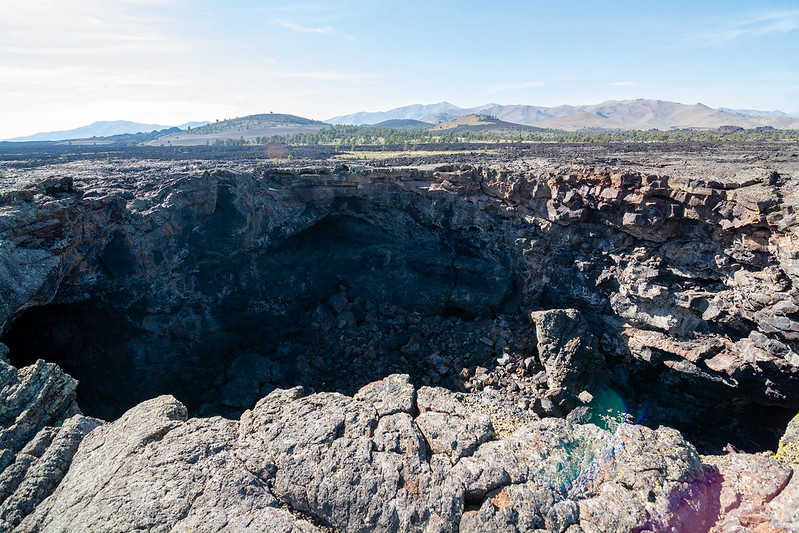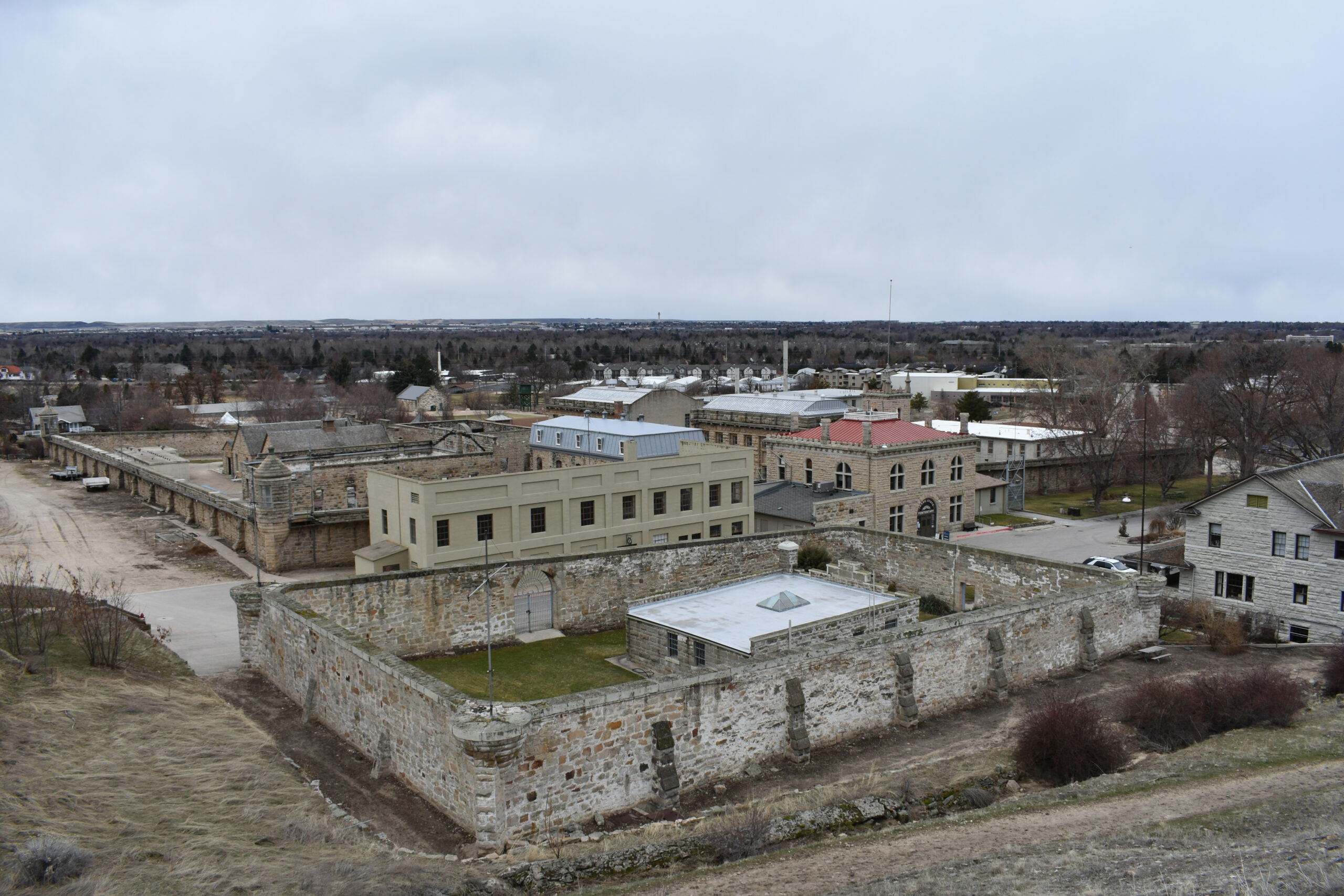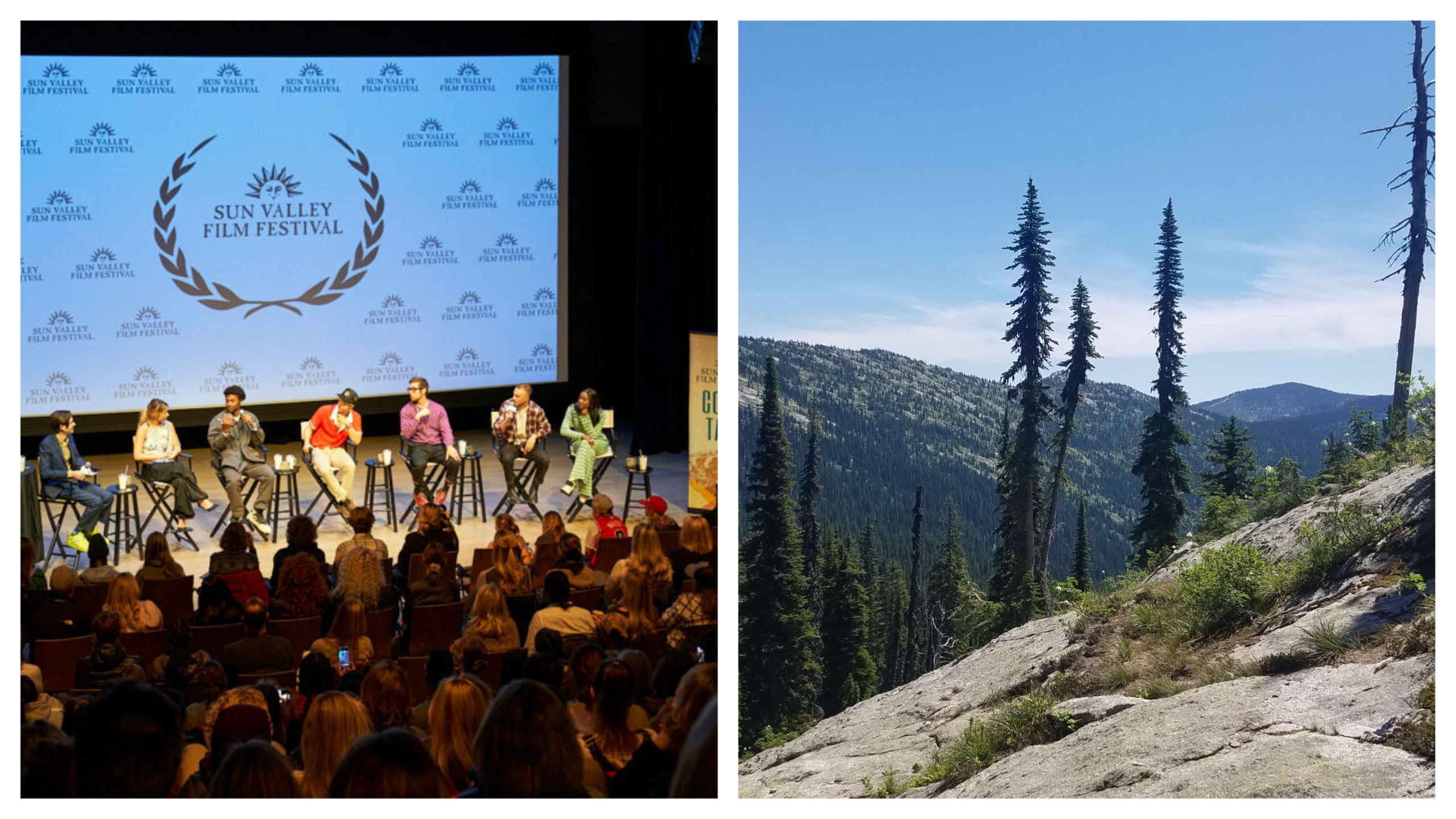Idaho, often known as the “Gem State,” offers a treasure trove of activities for outdoor enthusiasts, history buffs, and travelers seeking to experience its unique charm.
From awe-inspiring landscapes to rich cultural experiences, here are seven things you absolutely must do in Idaho.
1. Explore the Natural Wonder of Shoshone Falls
Located near Twin Falls, Shoshone Falls is often referred to as the “Niagara of the West” and stands even taller than its famous eastern counterpart.
This stunning waterfall, plunging 212 feet, is best visited in spring when the water flow is at its peak. The surrounding parks provide excellent opportunities for hiking, picnicking, and taking in panoramic views.
Dangers and Mortality at Shoshone Falls
While Shoshone Falls offers breathtaking beauty, it also poses significant dangers. The powerful currents of the Snake River, especially in the spring when water flow is highest, have claimed numerous lives over the years.
There have been tragic incidents involving both locals and visitors, with many accidents related to drowning or falls from the steep cliffs surrounding the falls.
The steep drop and the force of the water can make the area hazardous for inexperienced swimmers, kayakers, or those who venture too close to the edge. In the past, daredevils have attempted to go over the falls in boats or barrels, resulting in fatalities.
Even skilled adventurers and professionals can be caught off guard by the unpredictable nature of the river, which has swift undercurrents and treacherous rapids.
Despite fencing and warning signs, accidents continue to occur, often involving those who ignore safety measures.
Over the years, there have also been cases where individuals have tragically taken their lives by jumping into the falls.
Local authorities have worked to improve safety measures and public awareness, but the falls remain a place where visitors need to exercise caution and respect for the power of nature.
Preserving Shoshone Falls
In recent years, efforts to preserve Shoshone Falls and its surrounding environment have been stepped up, focusing on maintaining the natural beauty of the area and its ecosystems.
Though the flow of water over the falls is controlled by upstream water management systems, conservationists work to ensure that there is sufficient water flow during peak tourist seasons so visitors can enjoy the falls in their full glory.
Tourists are encouraged to stick to designated trails, heed warning signs, and take precautions when exploring the area.
Education programs in local schools and communities emphasize the importance of safety and the environmental significance of Shoshone Falls.
2. Hike Through the Sawtooth Wilderness
For those who love outdoor adventures, the Sawtooth Wilderness offers over 700 miles of trails weaving through alpine lakes, rugged peaks, and dense forests.
Whether you’re into day hiking or multi-day backpacking trips, the Sawtooth Mountains deliver breathtaking scenery, wildlife viewing, and the chance to experience Idaho’s pristine wilderness up close.
Best rafting shops and outfitters in Idaho, here are seven highly rated options:
- Cascade Raft & Kayak (Horseshoe Bend) – One of Idaho’s top rafting companies, offering trips on the Payette River for all experience levels. They have been providing thrilling whitewater adventures for nearly 40 years.
- ROW Adventures (Coeur d’Alene) – Known for multi-day rafting trips on rivers like the Middle Fork of the Salmon and Snake River, ROW Adventures offers high-quality experiences with professional guides.
- Middle Fork River Expeditions (Stanley) – A premier outfitter for rafting trips down the Middle Fork of the Salmon River, focusing on wilderness adventures in the heart of Idaho’s mountains.
- Idaho River Adventures (Boise) – Specializing in trips down the Middle Fork and Main Salmon rivers, Idaho River Adventures offers family-friendly and group rafting options.
- Orange Torpedo Trips (Riggins) – They focus on the Salmon River, offering rafting, kayaking, and multi-day adventures that cater to all experience levels.
- The River Company (Stanley) – Offering day trips on the Salmon River, this company prides itself on family-friendly adventures and scenic rafting.
- Hells Canyon Raft (McCall) – This outfitter offers trips through the famous Hells Canyon, the deepest river gorge in North America, providing both adrenaline-pumping rapids and serene wilderness.
These companies offer a mix of short day trips and extended wilderness experiences, making them some of the best rafting options in Idaho.
Choosing the best porter or guide for the Sawtooth Wilderness
1. Sawtooth Mountain Guides
- Overview: Sawtooth Mountain Guides is a well-established guiding service in the area, offering custom trips, backpacking, and climbing expeditions in the Sawtooths. They have experienced guides who know the terrain well.
- Services: They can help with carrying gear, route planning, and ensuring safety throughout the trip.
- Website: Sawtooth Mountain Guides
2. Redfish Lake Lodge
- Overview: Although more of a lodge and shuttle service, Redfish Lake Lodge partners with local outfitters for guiding and porter services. They are situated near the Sawtooth Wilderness and can be a great resource.
- Services: Boat shuttle, lodge accommodations, and access to local guide networks.
3. Contact Local Outfitters
- Stanley, Idaho: The gateway to the Sawtooth Wilderness, this town is home to several outdoor outfitters who can either provide porters or recommend experienced individuals.
- Service Options: Reach out to local gear shops or adventure outfitters who often have porters on staff.
4. Independent Porters
- Some independent porters and guides operate through platforms like Backpacker’s Meetup or through personal recommendations. Check local forums or hiking groups for specific recommendations based on your trip requirements.
Tips for Choosing the Best Porter:
- Experience: Ensure they have experience specifically in the Sawtooth Wilderness.
- Certifications: Look for certifications in wilderness first aid or similar qualifications.
- References: Ask for reviews or references from previous clients.
- Service Fit: Make sure the porter’s service aligns with your specific needs (e.g., heavy load carrying, trip duration).
3. Soak in the Beauty of Craters of the Moon National Monument
This vast expanse of lava fields offers an otherworldly experience right here on Earth. Located in central Idaho, Craters of the Moon National Monument and Preserve is the perfect spot for hiking, cave exploration, and learning about the area’s volcanic history.
The unique landscape, shaped by ancient lava flows, provides a surreal environment for photographers and explorers alike.
Visiting Craters of the Moon National Monument and Preserve is quite affordable, especially if you are looking for a quick visit or a longer exploration of the unique volcanic landscape. Here’s a breakdown of the costs involved:
1. Entrance Fees
- Private Vehicle (1-7 day pass): $20.00 per vehicle
- Motorcycle (1-7 day pass): $15.00 per motorcycle
- Individual (walking or biking): $10.00 per person
- Annual Pass (Craters of the Moon): $35.00 per year
2. Camping Fees
- Lava Flow Campground: $15.00 per night (first come, first served)
- Group Campground: $30.00 per night (reservations required)
3. Other Expenses
- Guided Tours: Some tours, like ranger-led cave explorations or star parties, may have additional fees (though many ranger programs are free).
- Lodging: If you don’t plan on camping, nearby towns like Arco or Hailey offer motel or hotel accommodations. Expect to pay around $80–$150 per night for mid-range accommodations.
- Food and Supplies: There are no restaurants or stores within the monument, so you may need to bring your own food and gear or plan to stop in nearby towns.
4. Annual Passes
- If you plan to visit other national parks or monuments in the same year, consider the America the Beautiful Annual Pass for $80, which grants entry to over 2,000 federal recreation sites, including Craters of the Moon.
Overall, the cost for a visit to Craters of the Moon can be as low as $10 for individuals or $20 for a vehicle, making it a budget-friendly destination!
Read also:
1. 30 Best Tourist Attractions in Florida | TouristsAdventure
2. 30 Best Tourist Attractions in California | TouristsAdventure
4. Go Whitewater Rafting on the Salmon River
Dubbed the “River of No Return,” the Salmon River is one of the best destinations for whitewater rafting in the United States.
Adventurers can tackle Class III and IV rapids while cruising through deep canyons and past dense forests. Multi-day trips offer the opportunity to camp along the river and enjoy the serene beauty of the surrounding wilderness.
Preparation For Rafting
Rafting can be an exhilarating and memorable adventure, but safety should always be the top priority. Here’s a guide to ensure you are well-prepared for a safe and enjoyable rafting trip:
1. Choose the Right Outfitter
- Experienced Guides: Select a reputable rafting company with experienced, licensed guides who are trained in swift-water rescue and first aid.
- Safety Reputation: Check reviews and ask about their safety records and protocols.
- Group Size: Smaller group sizes often allow for more personal attention from guides.
2. Know Your Skill Level
- Choose the Right Rapids: River rapids are classified from Class I (easy) to Class V+ (extreme). Be realistic about your skill level and fitness when selecting the type of rapids. Beginners should stick to Class I or II rapids, while more experienced rafters may opt for Classes III or IV.
- Practice Paddling: If it’s your first time, you may want to try some flat-water paddling to get comfortable with handling a paddle.
3. Wear the Right Gear
- Personal Flotation Device (PFD): Ensure your outfitter provides a well-fitting U.S. Coast Guard-approved life jacket. Always wear it properly while on the water.
- Helmet: Helmets are required on most whitewater trips. Make sure your helmet fits snugly.
- Clothing: Dress for the water temperature, not just the air temperature. Wet suits or dry suits may be necessary in cold waters.
- In warmer weather, wear quick-drying clothing (no cotton).
- In cooler weather, consider layers made of fleece, synthetic, or wool materials.
- Footwear: Wear river sandals or water shoes with secure straps to protect your feet. Avoid flip-flops or loose footwear.
4. Understand Safety Procedures
- Pre-trip Safety Talk: Pay close attention to the guide’s safety briefing. This will cover how to handle situations like falling out of the boat, navigating rapids, and what to do in an emergency.
- Know the Signals: Guides use hand and paddle signals to communicate on the water. Learn and understand these signals before starting.
- Stay in the Boat: If you fall out, try to float on your back with feet downstream to avoid hitting obstacles. Always listen to your guide’s instructions.
5. Stay Hydrated and Fueled
- Hydration: Bring a water bottle and drink plenty of fluids throughout the day. Dehydration can lead to fatigue and impaired judgment.
- Snacks: Bring energy-boosting snacks (trail mix, energy bars) for longer trips to keep your energy levels up.
6. Understand the River Conditions
- Check the Weather and Water Levels: Research the river conditions before your trip. High water levels after heavy rainfall can make rapids more challenging.
- Local Knowledge: Guides will often have up-to-date information on the river conditions, hazards, and any wildlife risks.
7. First Aid and Emergency Preparedness
- Medical Information: Inform your guide of any medical conditions, allergies, or medications you may need.
- Emergency Plan: Ensure the guide has a clear emergency plan in case someone needs medical attention, including knowledge of the nearest take-out points.
8. Stay Calm in Case of Emergency
- Swim to Safety: If you fall out, remember to keep calm, swim back to the raft, and follow your guide’s instructions.
- Use Throw Bags: Guides may use throw bags to help swimmers get back to safety. Stay calm and reach for the rope if thrown to you.
9. Know Your Environment
- Wildlife Awareness: Be aware of the wildlife in the area, as some animals may pose risks (e.g., snakes, bears in certain regions). Follow the guide’s instructions about handling encounters.
- Leave No Trace: Respect the environment and clean up after yourself. Ensure your trash is securely packed out.
10. Insurance
- Travel Insurance: Consider purchasing travel insurance that covers adventure sports in case of an accident.
- Health Insurance: Make sure your health insurance covers injuries that may occur during rafting, especially if you’re in a remote area.
With proper preparation, rafting can be a thrilling yet safe adventure. Do you have a specific river or region in mind for rafting? I can tailor advice based on the location!
5. Visit the Historic Old Idaho Penitentiary
History enthusiasts will appreciate a visit to the Old Idaho Penitentiary in Boise. Operational from 1872 to 1973, this prison housed some of the most notorious criminals in the Old West.
Today, it stands as a museum offering tours that showcase its fascinating history, including stories of escapes, riots, and famous inmates.
The Historic Old Idaho Penitentiary, located in Boise, Idaho, is a fascinating historical site that offers visitors a glimpse into Idaho’s past penal system. Opened in 1872, it served as a functioning prison for over a century until its closure in 1973. Here’s a quick overview of its history and features:
Overview of the Old Idaho Penitentiary
- Construction and Architecture: The prison was initially built using sandstone quarried by prisoners. Over time, the complex expanded to include several cell blocks, a chapel, a dining hall, and solitary confinement cells.
- Use as a Territorial and State Prison: The penitentiary housed both men and women and included notorious criminals like bank robbers and murderers. It was originally a territorial prison before Idaho became a state in 1890.
- Harsh Conditions: Life inside the prison was tough, with overcrowding, inadequate facilities, and harsh treatment. Prison riots occurred, and several escapes and executions took place.
Notable Features and Exhibits
- Cell Blocks: Visitors can tour the different cell blocks, including maximum security, solitary confinement (“Siberia”), and the Women’s Ward, which held female inmates.
- Execution Chamber: The prison has a hanging gallows, where several executions were carried out.
- Exhibits: There are exhibits on the prison’s history, famous inmates, and the daily life of prisoners. Visitors can also view prison artifacts, including inmate-created items and old uniforms.
Noteworthy Events
- Riots and Escapes: The prison saw several riots, including the 1971 riot over living conditions, which led to severe damage. Numerous escape attempts were made, some successful and others not.
- Closure: Due to deteriorating conditions, including a fire caused by a riot, the prison was closed in 1973, and prisoners were transferred to a modern facility.
Visitor Experience Today
- Historical Tours: The site is now a museum offering self-guided and guided tours. Special tours, such as paranormal tours, are also available.
- Events: The penitentiary hosts events like historical reenactments, educational programs, and “Frightened Felons” around Halloween, where the prison’s eerie atmosphere is highlighted.
The Historic Old Idaho Penitentiary offers a rich historical experience, providing insights into Idaho’s justice system and the life of its past inmates, making it a popular destination for history enthusiasts and curious visitors alike.
6. Discover the Scenic Beauty of the Idaho Panhandle
Northern Idaho, known as the Idaho Panhandle, is home to some of the state’s most picturesque landscapes.
Lake Coeur d’Alene is a major highlight, offering boating, fishing, and lakeside dining. In the winter, nearby Silver Mountain and Schweitzer Mountain Resort become skiing and snowboarding havens.
7. Attend the Sun Valley Film Festival
Every March, the Sun Valley Film Festival draws filmmakers, actors, and movie lovers from around the world to this scenic mountain town.
Besides screening independent films, the festival offers panels, workshops, and opportunities to mingle with industry professionals. It’s a great way to combine the love of film with the beauty of Idaho’s mountain scenery.
Whether you’re an adrenaline junkie or someone seeking a peaceful retreat into nature, Idaho has something to offer.
These seven activities highlight the best of Idaho’s natural beauty, history, and cultural offerings, making it a must-visit destination for travelers of all kinds.

